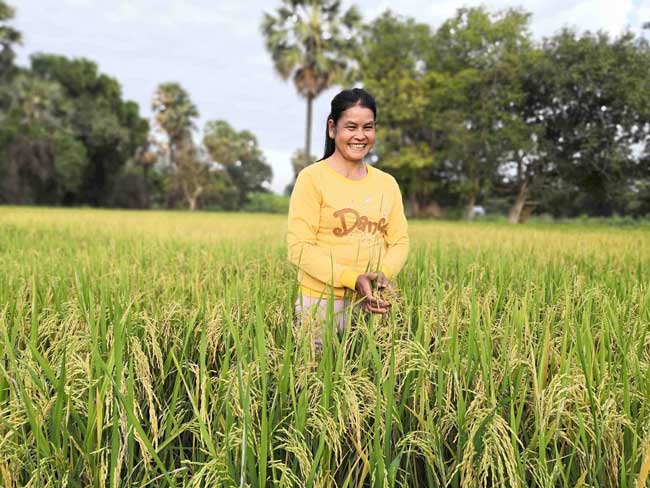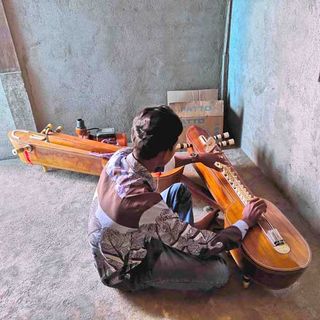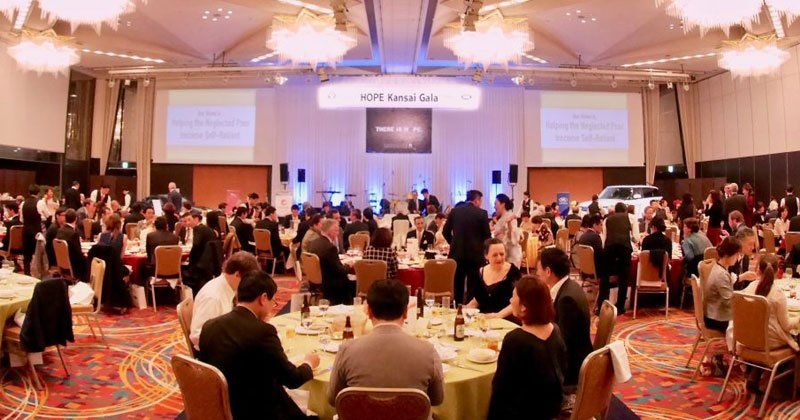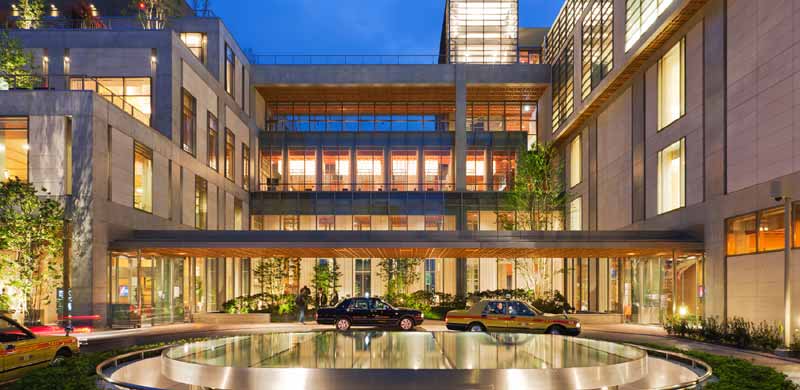Sow Rice, Grow Smiles
Elisa Bongiovanni, Volunteer at HOPE-JP • February 17, 2020
HOPE's Dry Season Rice Program
Have you ever heard of dry season rice? If you are anything like me before I started volunteering for HOPE Japan in 2018, the answer is probably not. But don’t worry. Last December, I went to Cambodia to meet the families that received HOPE's support to grow dry season rice and I am here to share with you what I found out.
First of all, what is dry season rice?
Dry-season rice
is a strain of rice that needs less water to grow and combined with specific irrigation techniques, allows farmers to grow rice during the dry season and therefore harvest multiple crops throughout the year. This is not the case for traditional rain fed paddies, where rice is planted and grows only during the wet season and can be harvested only once a year. If the weather is not favourable, if there is not enough rain or too much rain and the only annual crop is scarce or damaged, farmers and their families are exposed to food and income shortages. In Cambodia, rice is the first source of food and income for many households. By increasing the quantity of rice produced annually, dry season rice helps people to achieve food security and fight poverty.
Since 2005, HOPE and its partners have helped thousands of farmers living in the province of Pursat, one of the poorest provinces in Cambodia, to develop the cultivation of dry season rice. HOPE helps farmers acquire quality dry season rice seeds and irrigation tools and provides training and technical support. Thanks to HOPE, a community rice mill is installed in each village to process the crops. The by-products are used by the farmers to feed the animals and make organic fertilizers, creating an integrated and environmentally friendly farming system. HOPE also supports animal farming through the establishment of animal bank programs. The community mills, the stocks of seeds and the animal banks are managed by locally established Village Agricultural Committees (VACs) and the entire community works together in cooperation and solidarity to achieve self-sustenance.
In December 2019, while travelling through the countryside of Pursat, accompanied by HOPE Cambodia staff, I had the privilege to meet some of the families that received HOPE support to grow dry season rice. I will never forget the warm welcome and the kindness of the people, nor the eagerness with which they shared their stories. Some of them proudly showed me their green paddies and the thriving ears of rice, explaining to me that dry season rice is tasty and easy to sell at the market. Others showed me the mill and how it works, the water pumps and the healthy pigs that they are rearing. When talking about the past, before they could grow dry season rice, many farmers related stories of extreme poverty. During the dry season, they did not have enough food or money and had to leave the village in search of any type of job in the cities, in the jungles or abroad where they would often emigrate illegally in extremely dangerous and dreadful conditions. However, the recollection of the harshness of the past didn’t seem to cloud the enthusiasm with which they talked about the present and the future. Most families plan to use the increased income generated by the sale of dry season rice to buy more land, rebuild their houses and provide higher education to their children.
This confidence in the future is certainly what characterizes Sanpov and Samonm, a married couple living with their 19-year-old son and three other relatives in Oromchong village. This family joined HOPE’s program and started growing dry season rice in 2013 and Oromchong village built the community mill in 2015. Sanpov is a member of the VAC and helps other villagers to use the community mill that is installed near his house. At the time of my visit, 300 kg of milled rice were kept at the mill and waiting to be picked up by a farmer of the community.
Samonm showed me the bran and the husks that remained after the milling and that will be used as fertilizers or mixed with corn and dry tapioca to feed the animals. Since they started growing dry season rice, the family's income has increased, allowing them at first to meet their basic needs and in time, to extend their paddy and build a bigger and nicer house. In the future, they plan to buy additional land to grow more rice and other crops and wish to provide higher education to their son. Because, as Sanpov said: "now that we don't fear hunger anymore, we can make plans for the future". Being able to make plans, to have dreams is what they always hoped to offer to their son. Their son can now cultivate his passion for music, play the krapeu (takhe), a traditional Cambodian instrument and dream to become a leader of his own music band.
At the end of my journey, thinking of the people I met, their faces and their stories, I recalled that in my native language, Italian, the word riso has the double meaning of “rice” and “laughter, smile”. It is certainly no coincidence, I thought, and I felt grateful of being a part of HOPE that helps people to sow rice and grow smiles.









